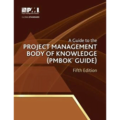
In the world of project execution, meetings are often seen as a double-edged sword. On one hand, they’re essential for keeping everyone on the same page, fostering collaboration, and resolving issues.
On the other, they can become time-consuming, unproductive time sinks if not managed correctly.
In this post, we’ll explore the essentials of conducting effective project meetings, from setting clear objectives to ensuring every voice is heard, and how these gatherings can propel your project towards success or, if mismanaged, lead to its derailment.
The Importance of Project Meetings
Meetings have value. They serve as critical junctures where ideas are exchanged, strategies are developed, and decisions are made. They provide a platform for alignment, where team members can sync up on project status and recalibrate their collective focus. The real worth of a meeting is realized when it leads to clarity, reducing misunderstandings and fostering a shared vision among the team.
Moreover, meetings are invaluable for problem-solving; they allow for immediate feedback and collective brainstorming, often leading to innovative solutions that solitary work might not yield. When executed with clear objectives, an agenda, and active participation, meetings can accelerate decision-making, thereby catalyzing the project’s progress.
But meetings have a more indistinct, qualitative, benefit as well; they are pivotal in fostering team building. By bringing team members together in a structured environment, meetings encourage interpersonal interaction that can strengthen relationships. They offer a space where individuals can share not only their professional insights but also personal anecdotes, creating bonds that go beyond the workplace. Through collaborative problem-solving and decision-making processes, meetings enhance trust among team members, as everyone’s input is valued and considered.
Hence, effective meetings can transform a group of individuals into a cohesive, motivated team, ready to tackle any project with enthusiasm and mutual support.
Meetings can sometimes get a bad rap, however strong project managers cannot ignore the benefits of having some meetings.
The negative side is what I like to call “over-meeting.”
The Pitfalls of Over-Meeting
 The most obvious problem with meetings is that they consume a disproportionate amount of time that could be better spent on more productive work. Every hour spent in a meeting is an hour not spent on other potentially more valuable tasks. This includes not just work time but also opportunities for personal development, networking, or simply recharging which are crucial for maintaining work-life balance.
The most obvious problem with meetings is that they consume a disproportionate amount of time that could be better spent on more productive work. Every hour spent in a meeting is an hour not spent on other potentially more valuable tasks. This includes not just work time but also opportunities for personal development, networking, or simply recharging which are crucial for maintaining work-life balance.
But over-meeting doesn’t just reduce the number of units of person-time, it also reduces the amount of production per unit of person-time.
The constant interruption of workflow by back-to-back meetings disrupts the deep work necessary for complex problem-solving or creative tasks. This “context switching” leads to a loss of focus and efficiency, as individuals need time to regain their momentum after each meeting. Enter the phenomenon of meeting creep, where meetings expand to fill the time allotted to them.
It can also lead to over-consultation and decision making paralysis where decisions are delayed or muddled by too many opinions or unnecessary bureaucratic processes. Things get bogged down in endless discussions.
Much has been said about the pitfalls of over-meeting, so let’s get into some strategies that you can use to make your meetings productive and avoid the grind.
Strategies for Effective and Efficient Meetings
- Have Clear Objectives:
- Every meeting should have a clear agenda. What is the meeting’s purpose? What decisions need to be made? If there’s no clear goal, perhaps the meeting isn’t necessary.
- Keep It Short and Sweet:
- Adopt a standing meeting policy or set a strict time limit. When meetings are shorter, discussions tend to be more focused.
- Invite Only Necessary Participants:
- Only include those whose presence is crucial for the meeting’s objectives. This not only respects others’ time but also keeps the meeting concise.
- Use Technology Wisely:
- Leverage tools for asynchronous updates. Not all discussions need to happen in real-time. Use project management software to share updates, decisions, and next steps.
- The “No Meeting” Days:
- Implement days where no meetings are scheduled. This allows blocks of uninterrupted work time, which can be crucial for deep work or creative processes.
- Start with Stand-ups:
- For daily check-ins, consider stand-up meetings where each person briefly shares what they did yesterday, what they will do today, and any blockers. These should be time-boxed to 15 minutes or less.
- Decision-Making Protocols:
- Have a clear method for decision-making during meetings. If a decision can’t be reached, agree on an action item or a follow-up instead of prolonging the discussion.
- The Power of Pre-Meeting:
- Send out pre-read materials. If attendees can review documents or data beforehand, the meeting can focus on discussion and decision rather than information dissemination.
- Post-Meeting Actions:
- Always end with action items clearly assigned. This keeps the momentum going from the meeting into actual work.
- Evaluate Meeting Effectiveness:
- Use a feedback mechanism to assess if meetings are productive. If they consistently aren’t, it’s time to rethink the meeting strategy.
- Embrace Virtual When Possible:
- For teams not co-located, virtual meetings save travel time. However, ensure they’re interactive to keep engagement high.
- Meeting-Free Zones:
- Designate areas or times where no meetings are held, allowing for deep work or personal time management.
Conclusion
Project meetings are crucial for the health and success of any project, acting as the glue that holds the team and project structure together. However, they must be managed with precision to avoid becoming a project’s Achilles’ heel. The key is to balance their frequency, ensure they are purpose-driven, and keep them as efficient as possible. By doing so, you can harness the benefits of meetings without falling into the trap of over-meeting, thus maintaining both productivity and morale.
Remember, in the grand narrative meetings should be supporting characters, not the protagonists. Keep the spotlight on execution and let meetings play their part in the background, subtly ensuring the show goes on smoothly.











Leave a Reply